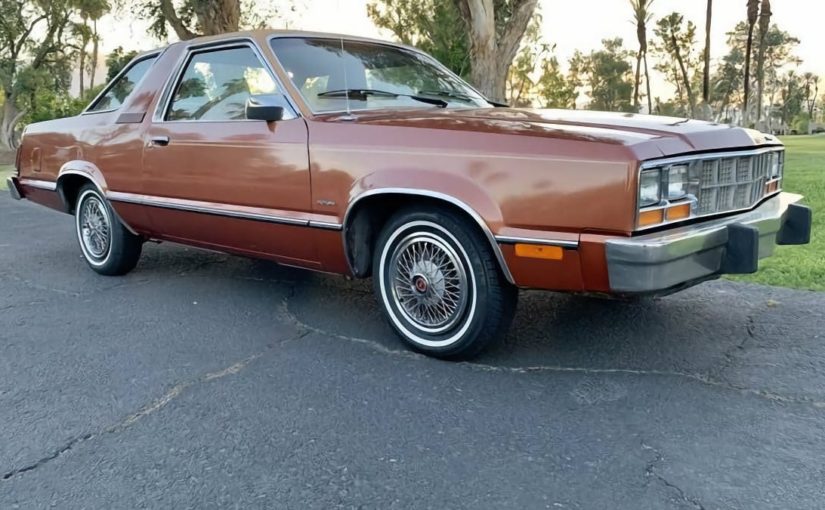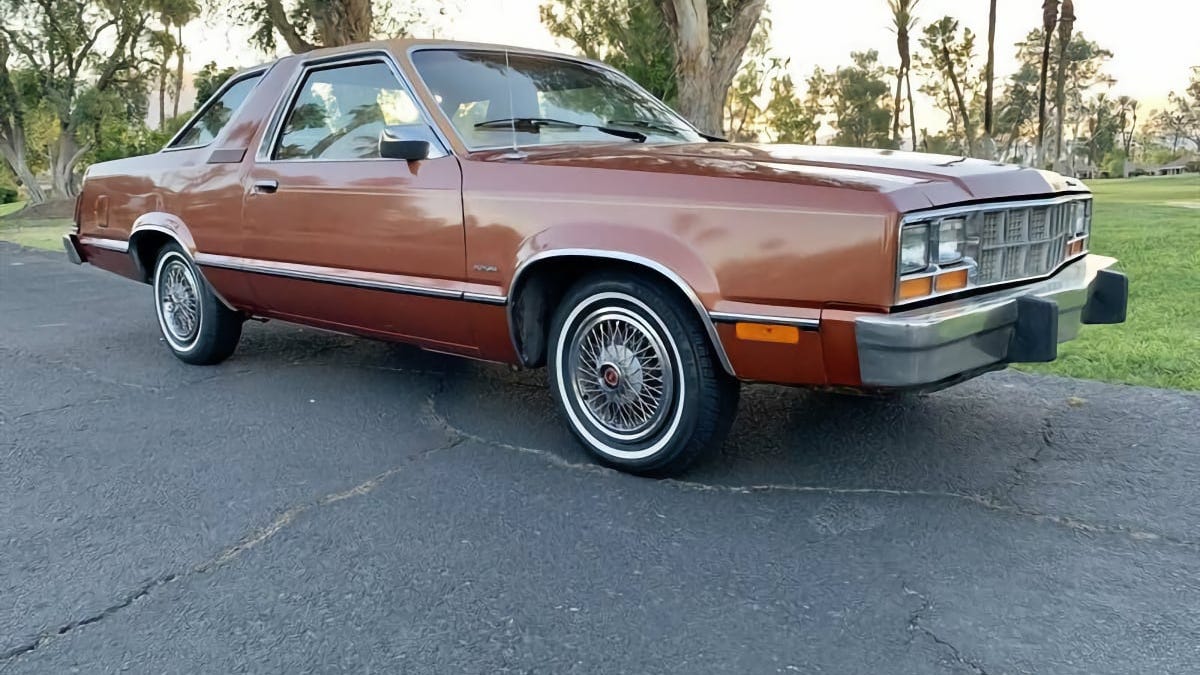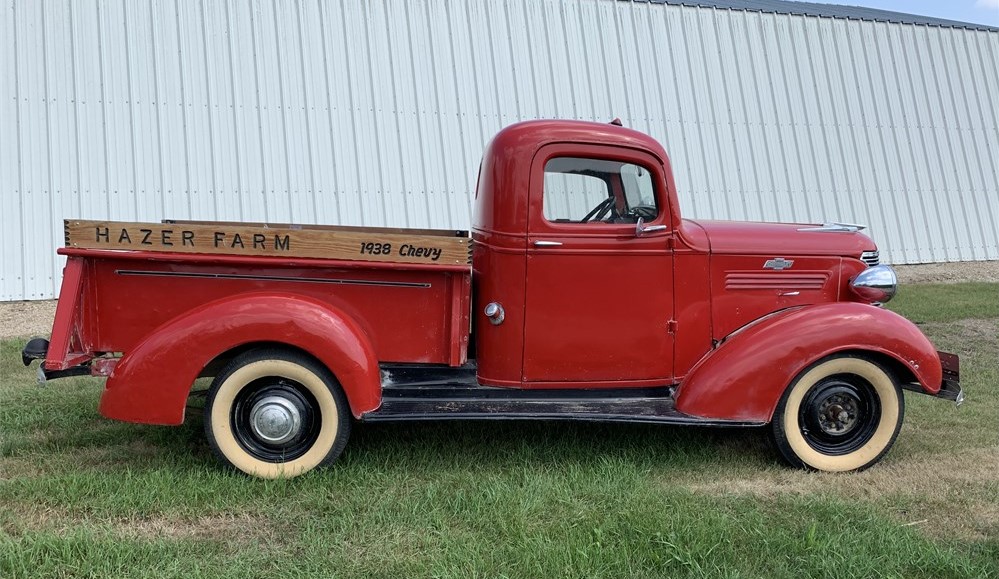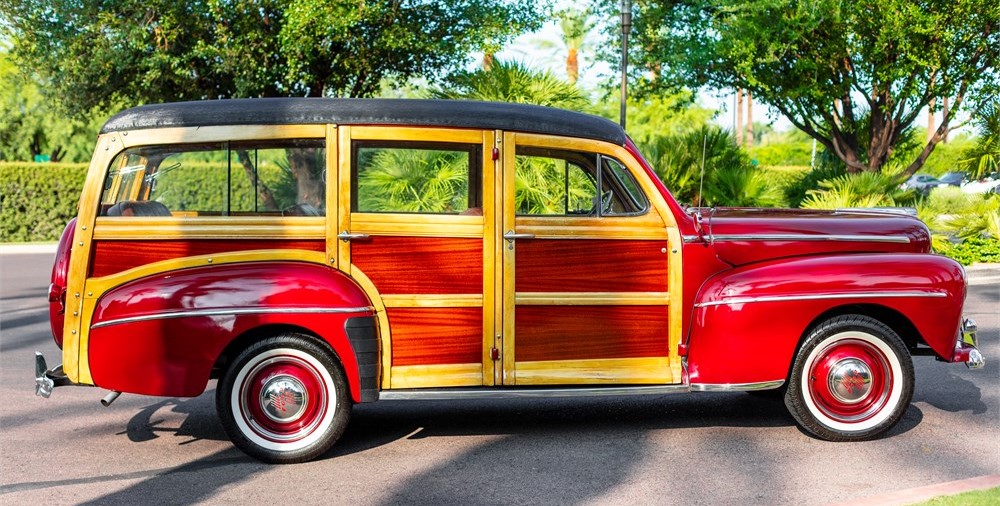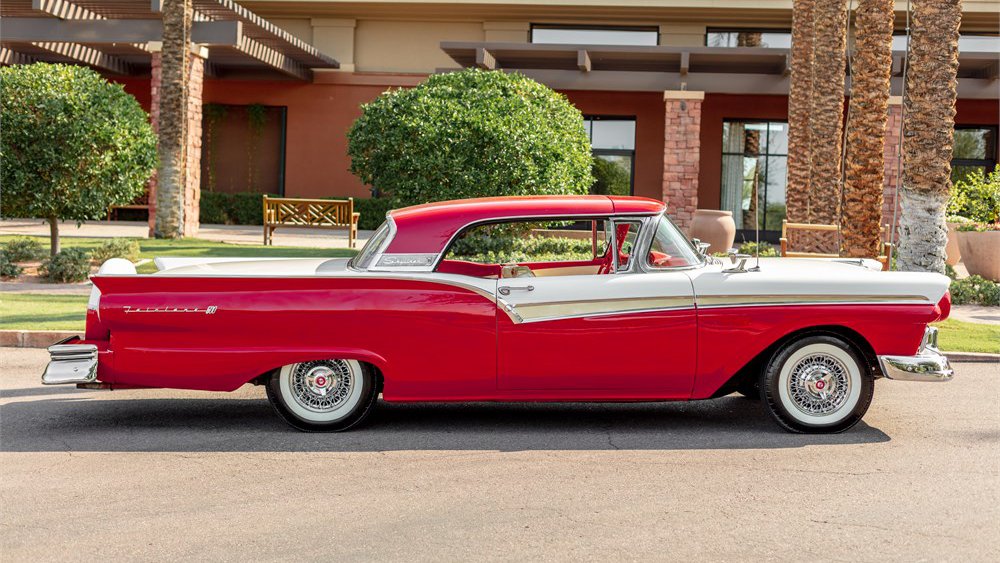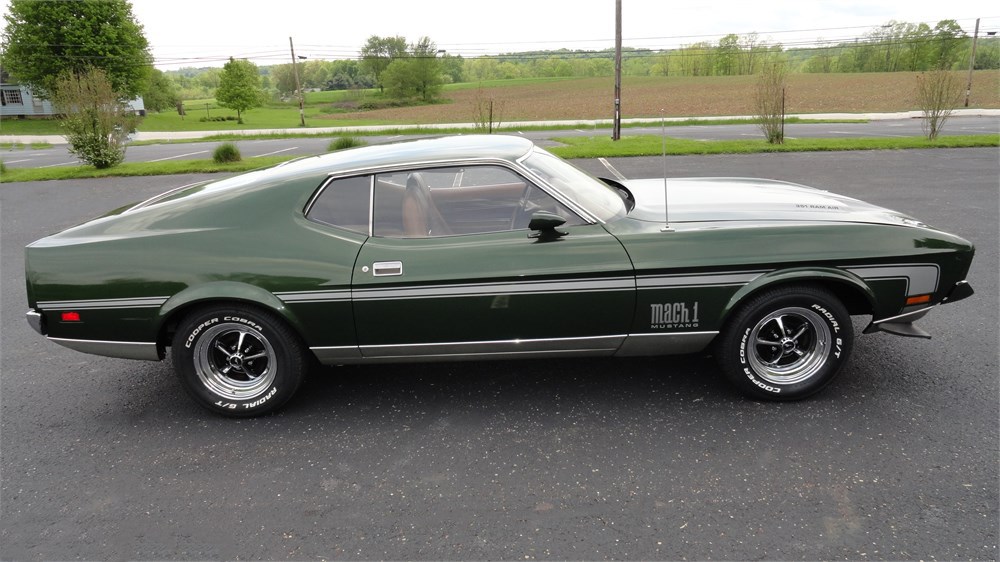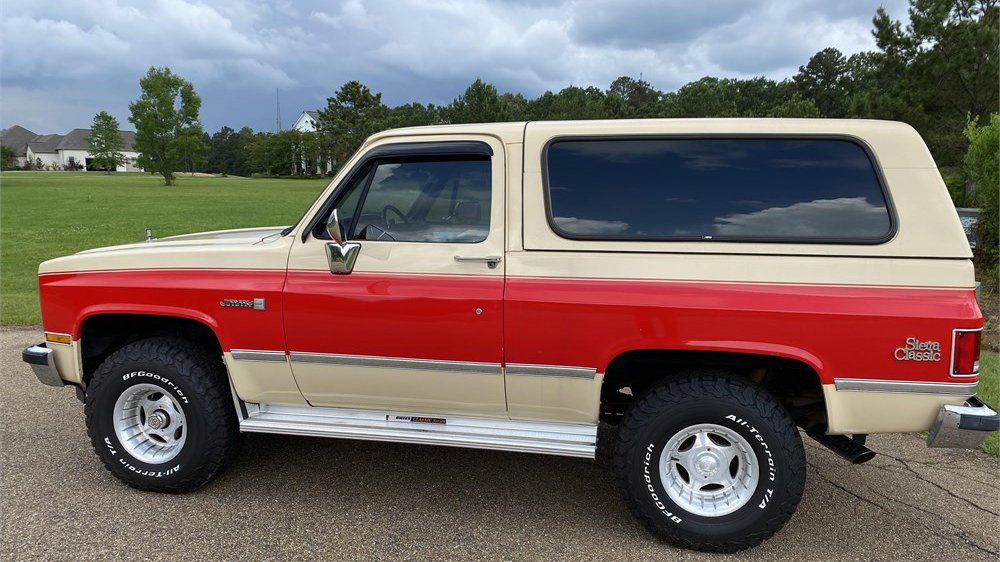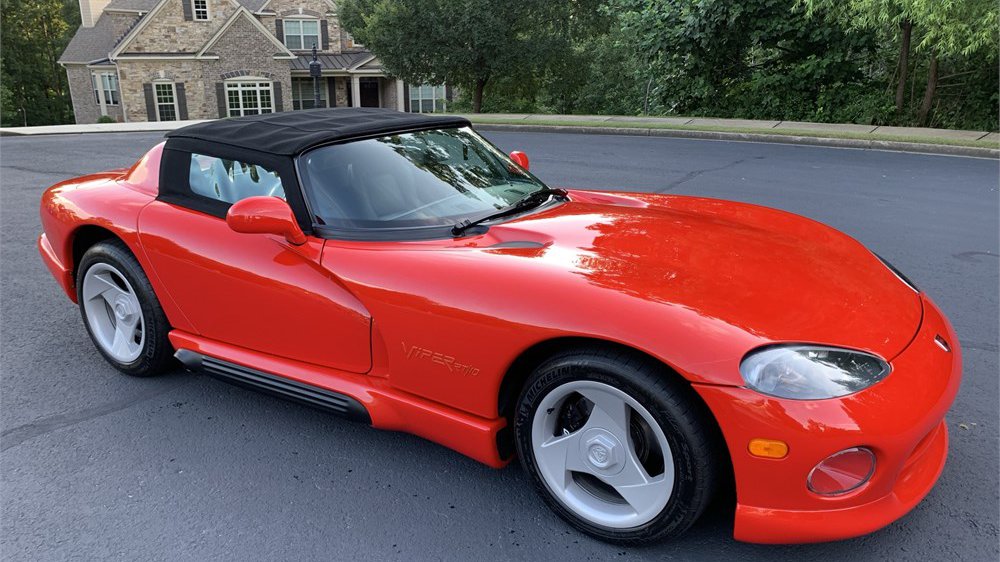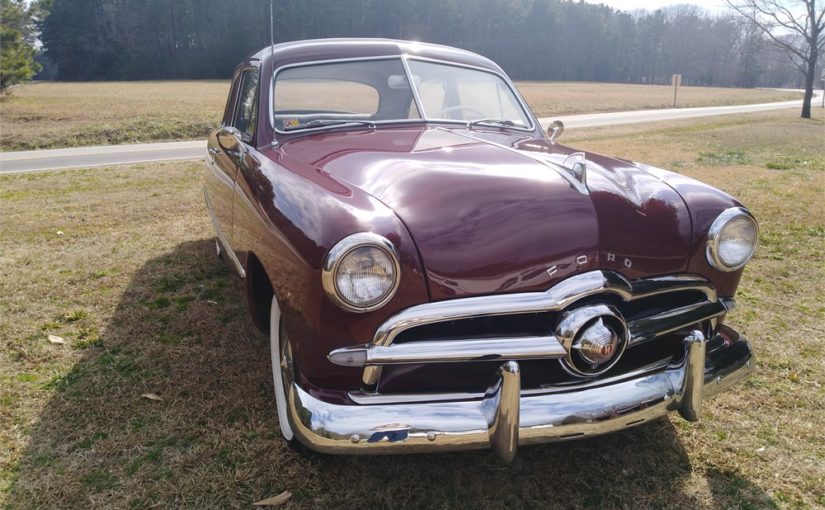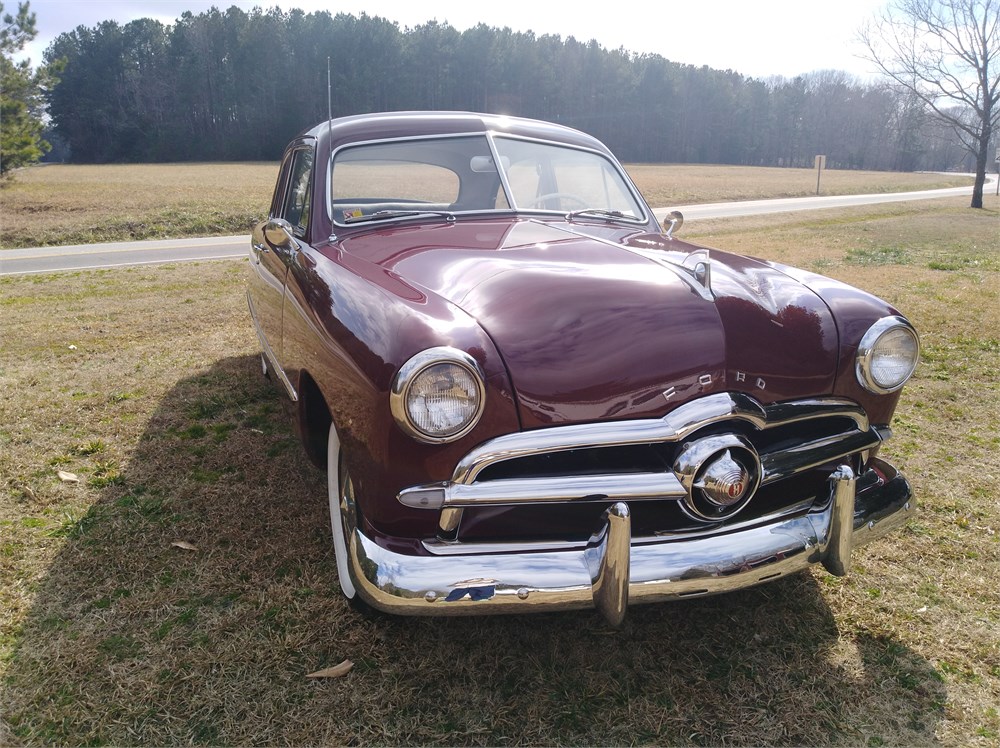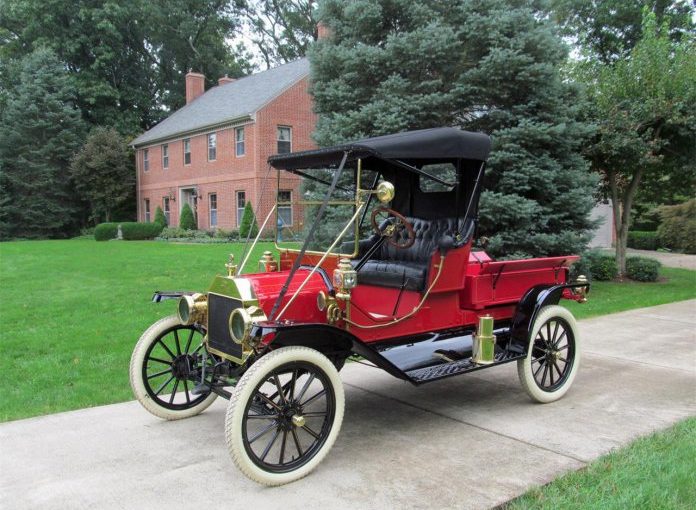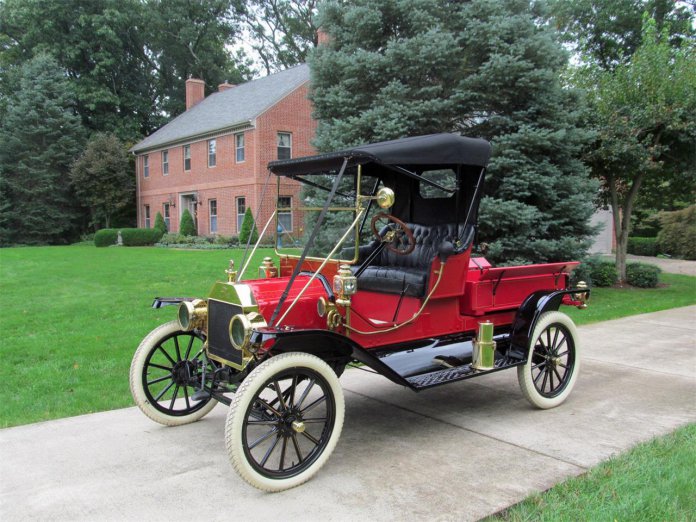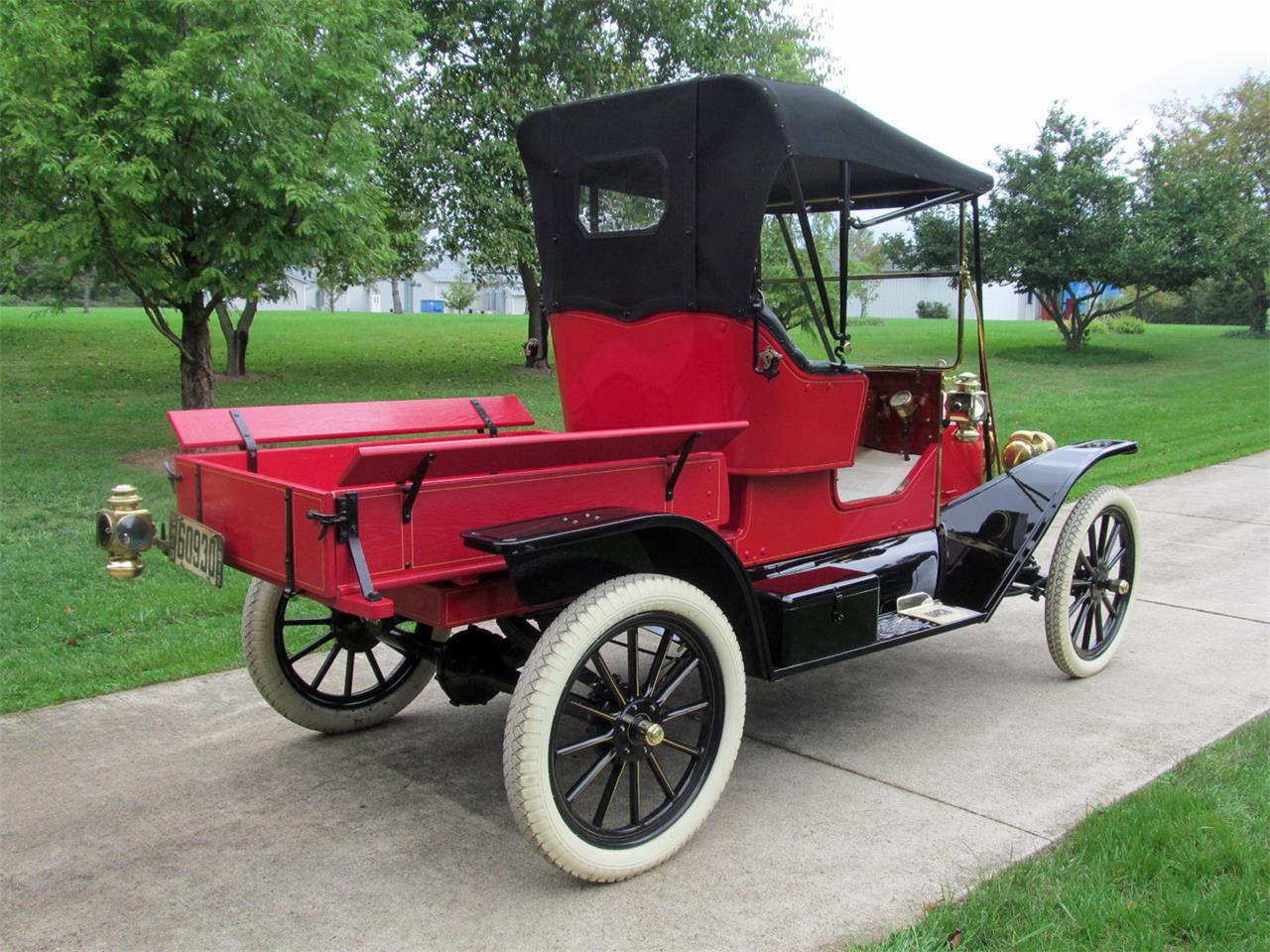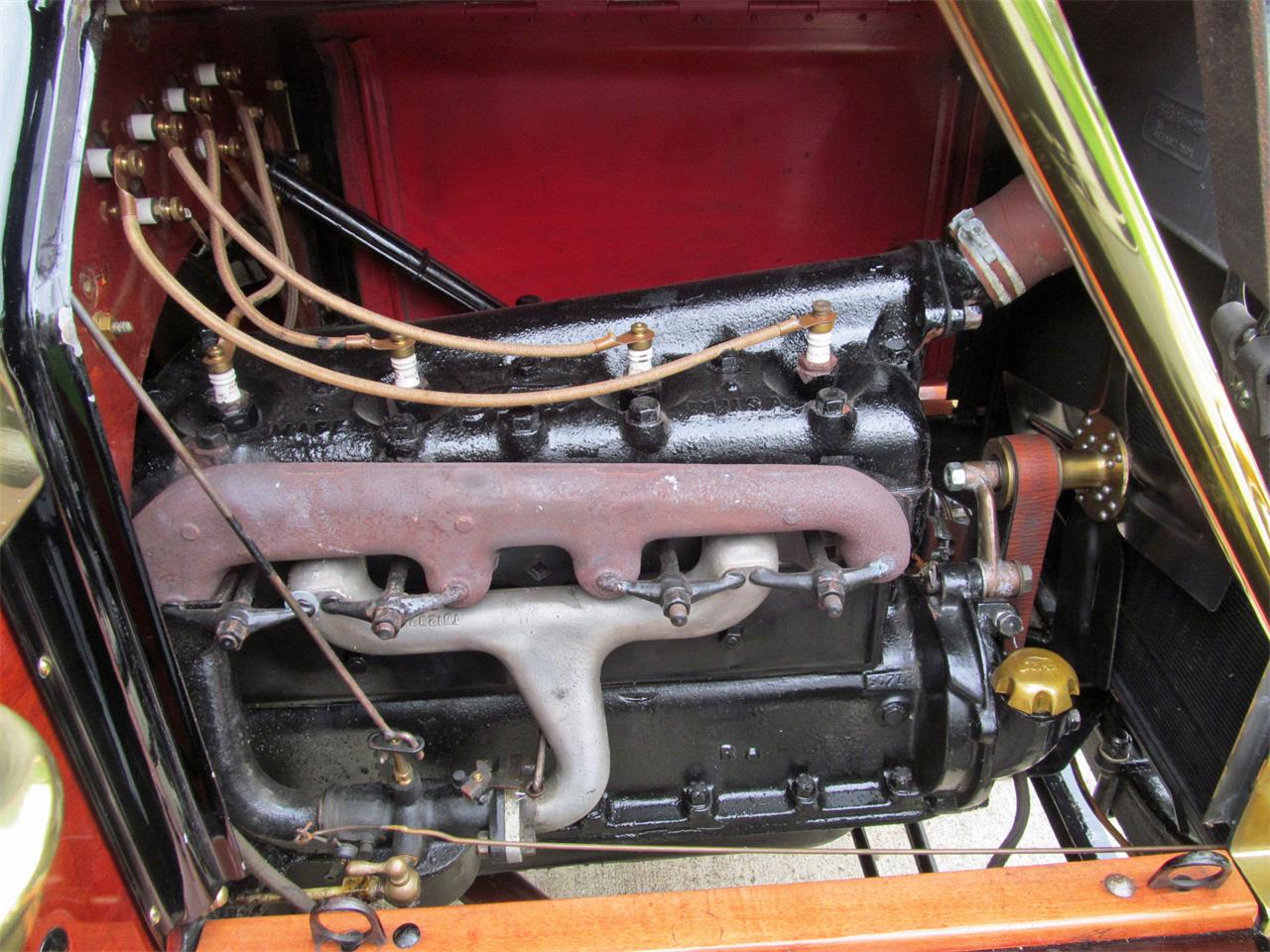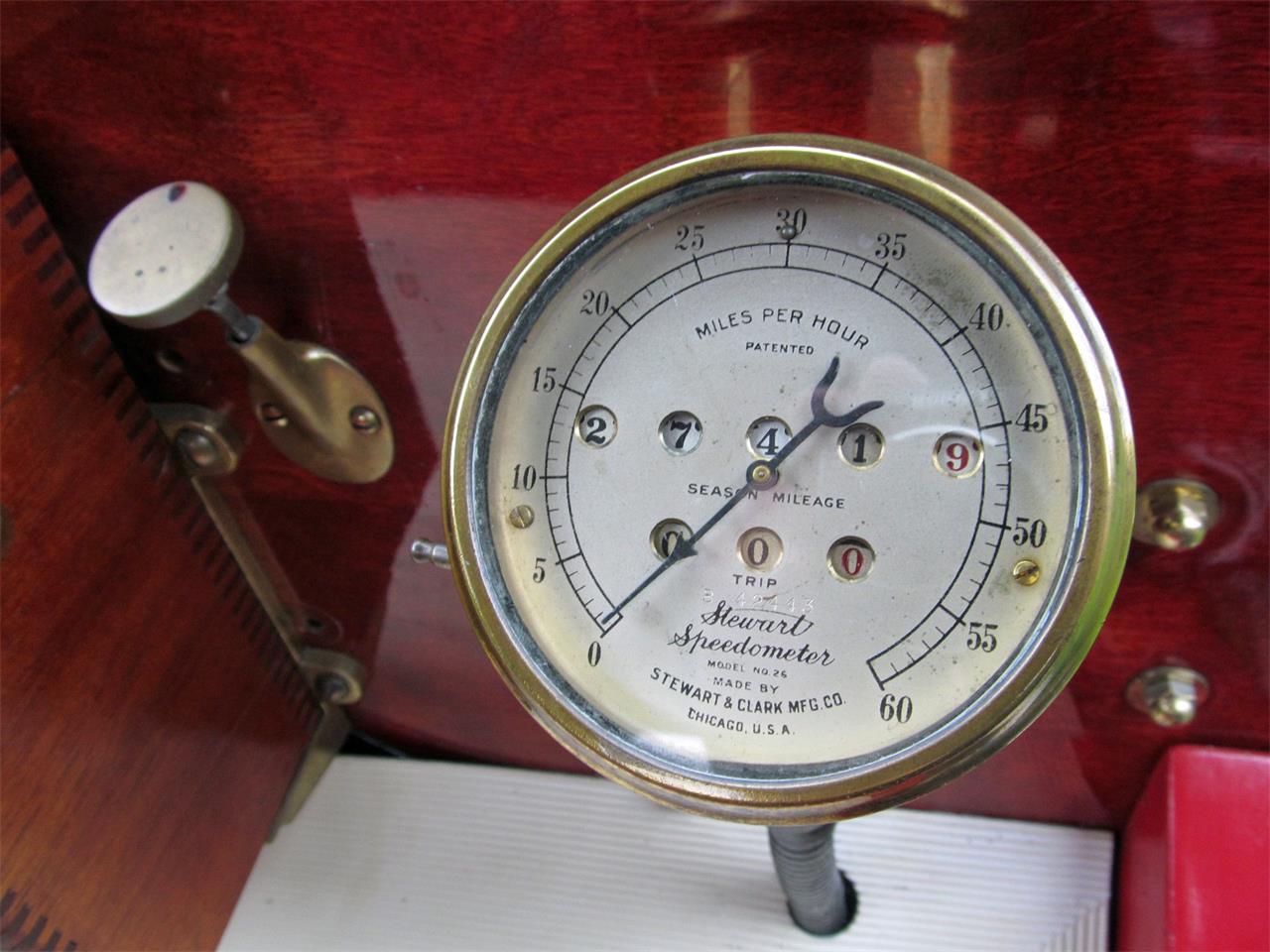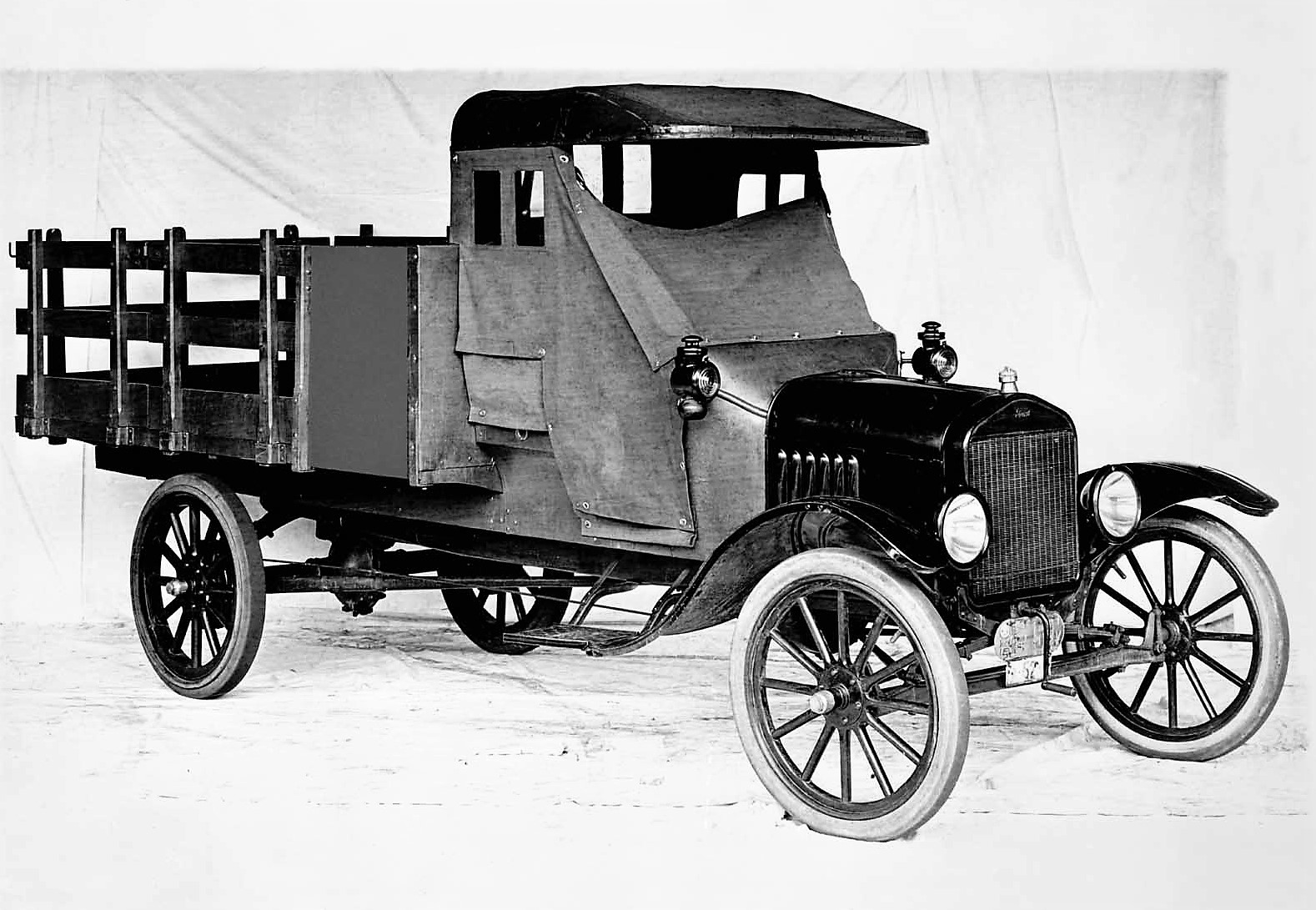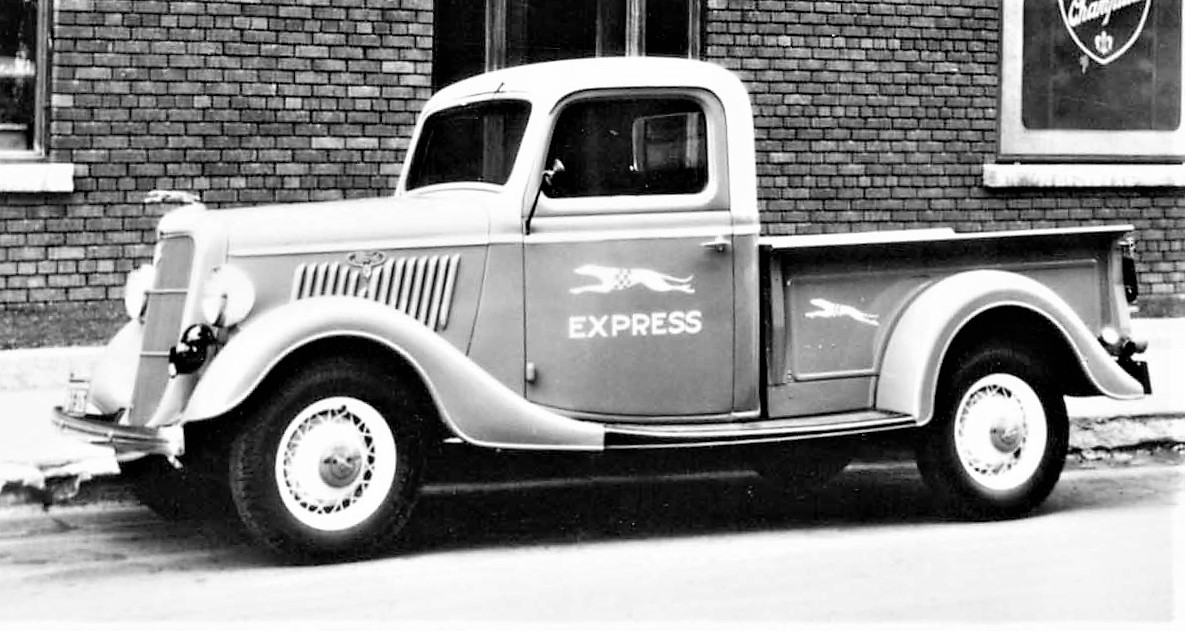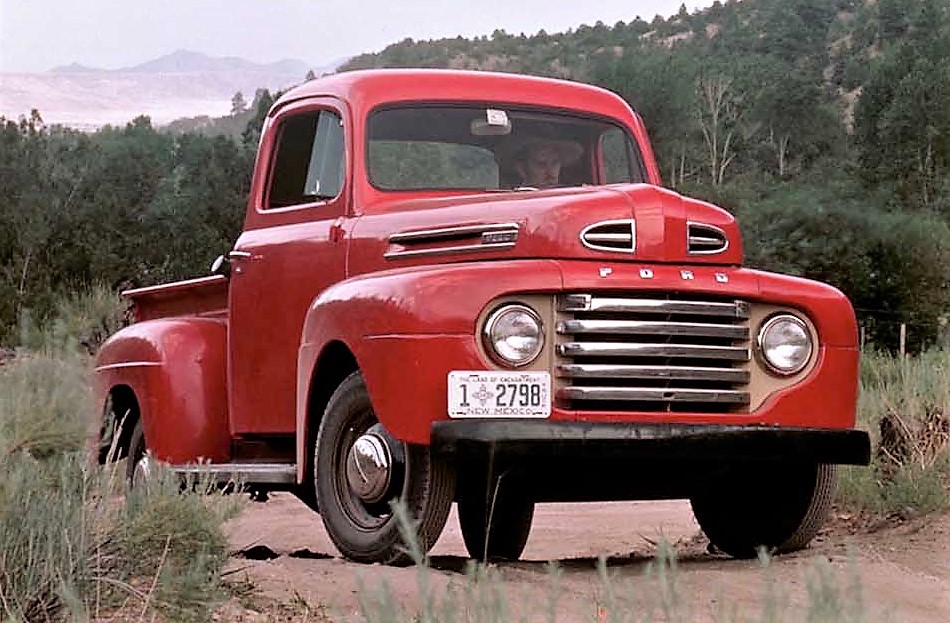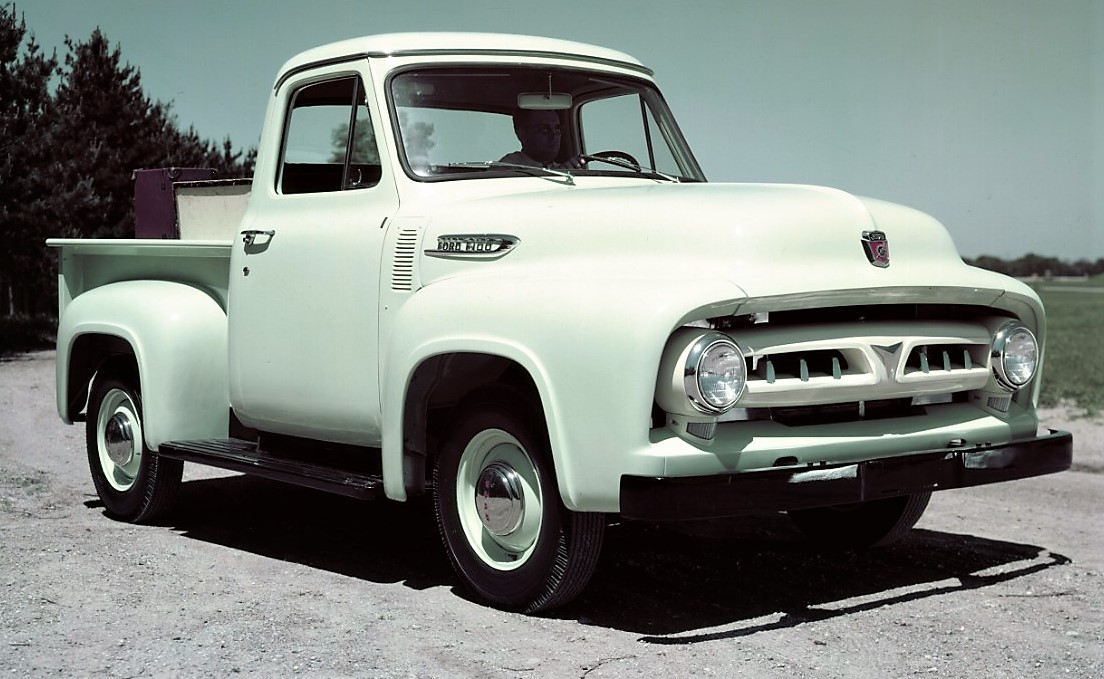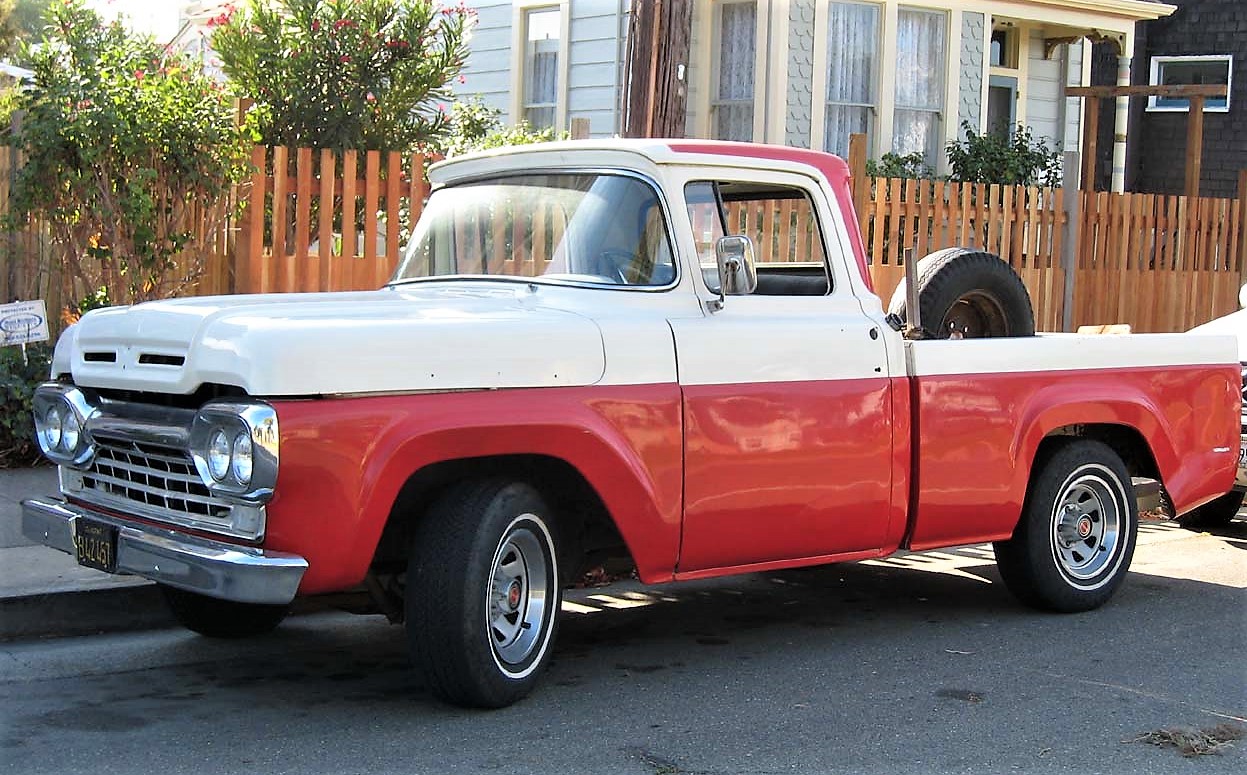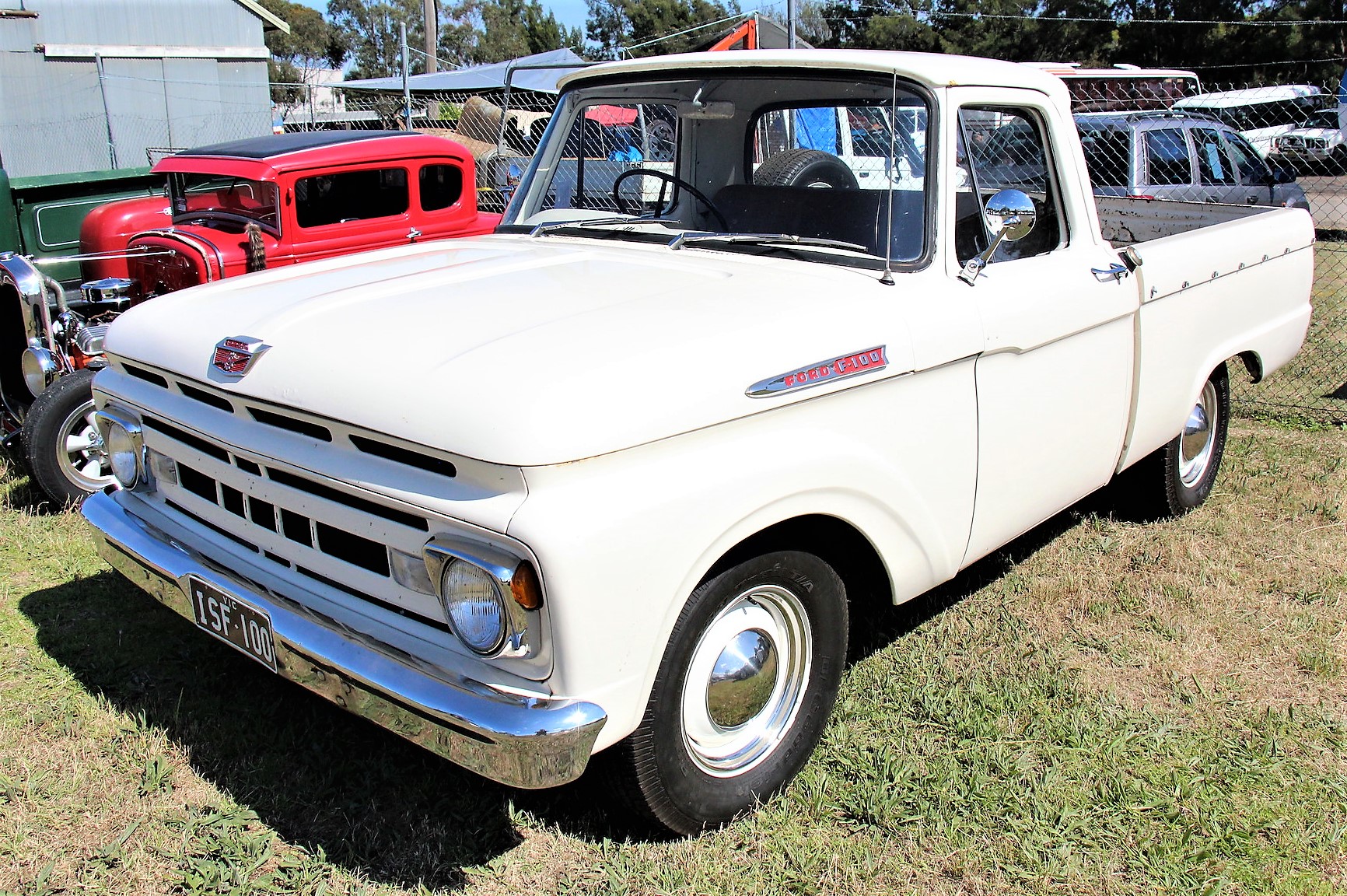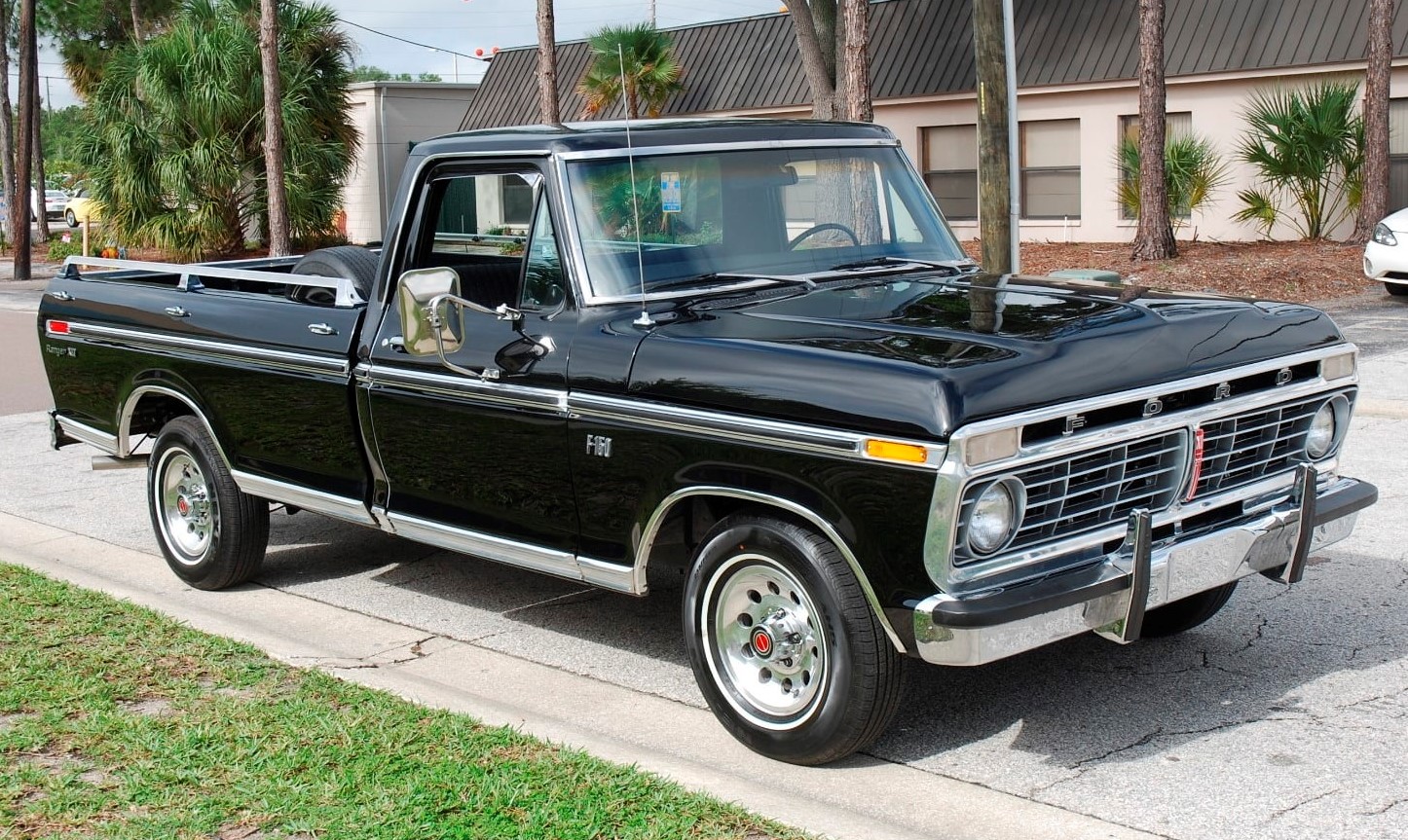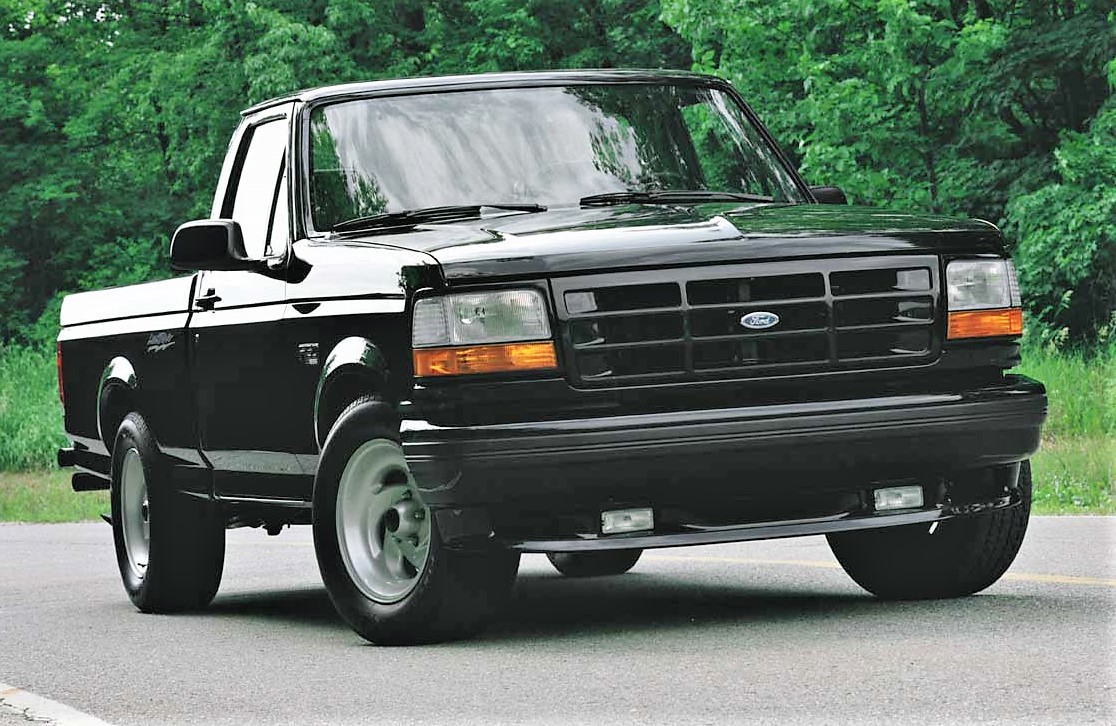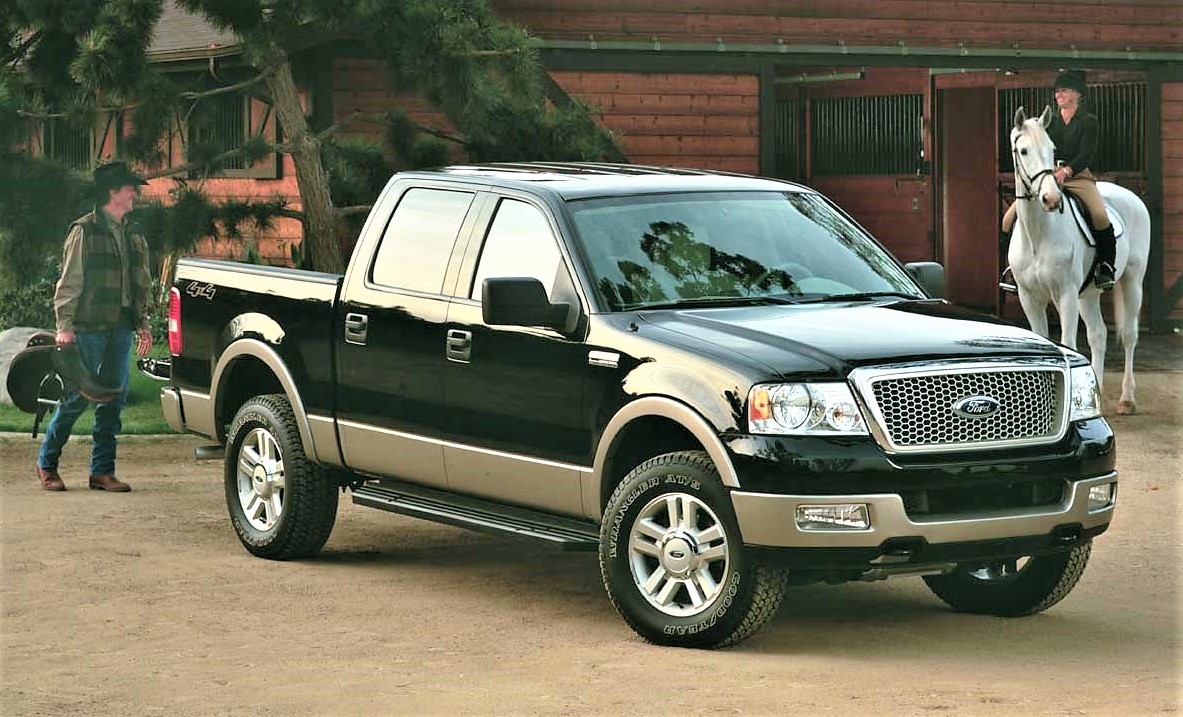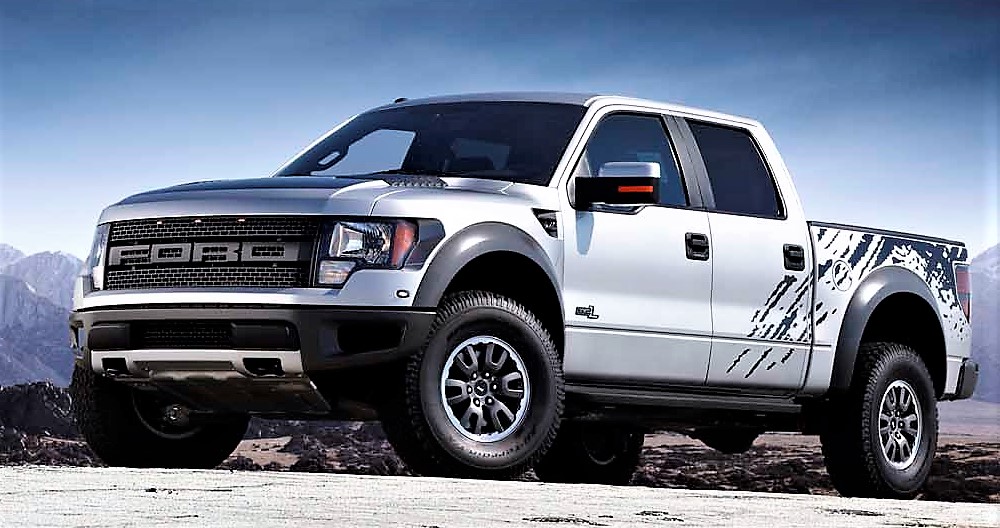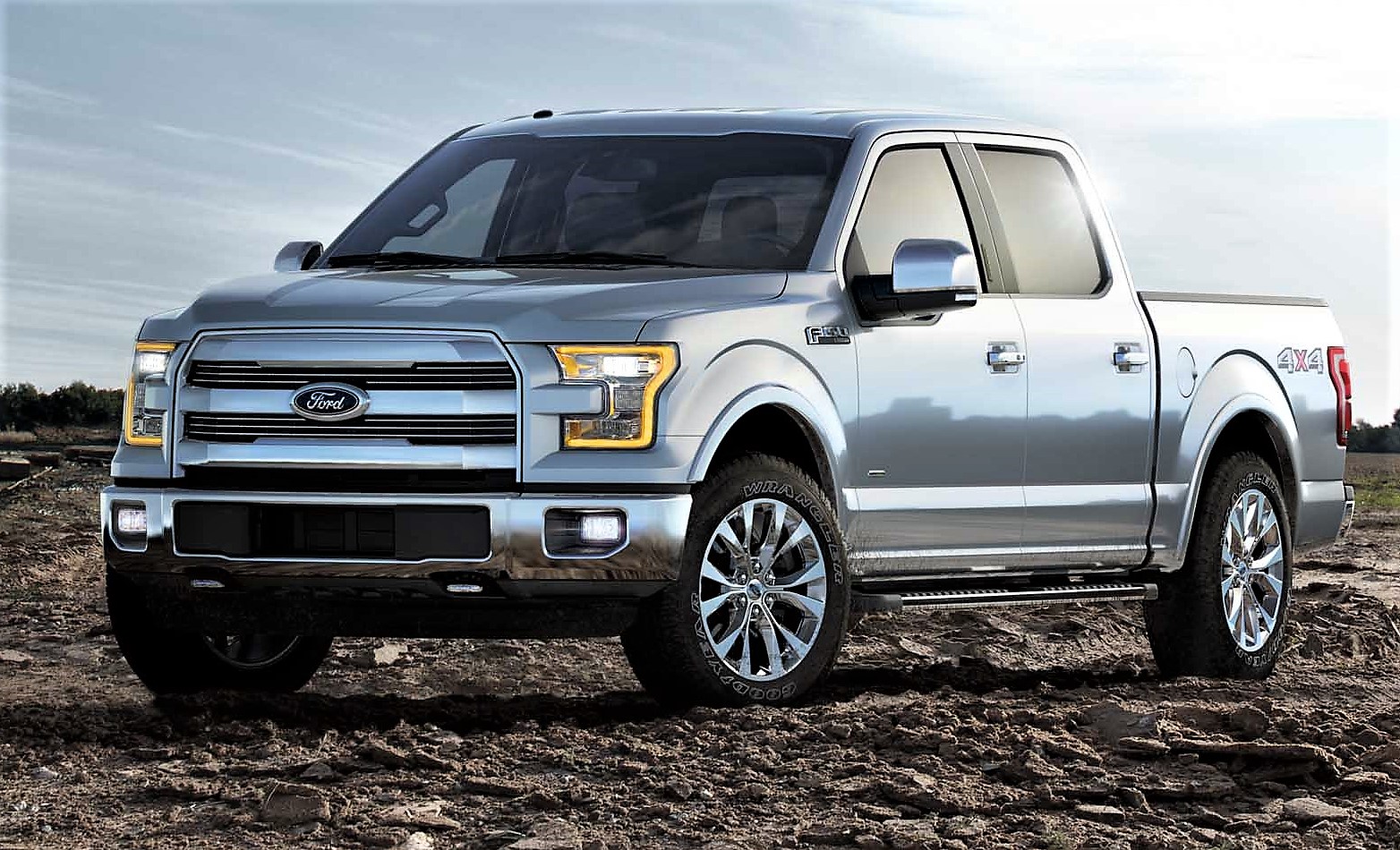Ford said they plan to keep adding more of these DIY videos, and from what I’ve seen so far, they all look useful and give real, usable options for people who want to do specific things but don’t want to spend a bunch of money on truck accessories if they don’t have to.
Take the bike rack one there; a bike rack that does what the DIY one does goes for about $250; the Ford solution costs maybe $20 or so in parts, and it does the job just fine thanks to some clever bed design built into the truck that has slots for 2x4s to be easily mounted for stuff like this.
I saw this bike rack completed at the event, and it sure looked like it’d do the job just as well as that $250 one:
Those slots for wood planks can also act as cargo dividers, and there’s threaded holes in the bed for DIY side rails and other cargo securing systems.
It’s clear that someone—or, likely, many someones—really thought this through and actually gave a shit about making this bed as usable as possible, as affordably as possible, which is key for a truck with a sub-$20,000 starting price.
There’s a realization I’ve come to in life that tells me that what gets in the way of doing things are little things that you don’t want to do, and the beauty of a little truck like the Maverick is that it helps remove the little ass-pain things that stop you from doing the things you want.
The little things that stop you don’t have to be huge; they just have to be just pains in the ass enough. They’re the reason why you don’t go see your friends on the other side of town because it’s just such a hassle to get there. They’re the reason I don’t take my shitty canoe out more often, because it’s a pain in the ass to heave onto the roof of my Pao without scraping something.
I do it, sure, but if I could just drag that canoe and shove it in the bed of a truck and quickly tie it down to some convenient points then, yeah, I’d do it a lot more, because it would mean 5 minutes of prep instead of 30.
Oh, and the tie-downs are bottle openers, too:
This is a vehicle that, far more than an SUV or crossover, will make doing things easier. See something on the side of the road that you could use in a project? Grab it and chuck it in the back. Picking up filthy things? Who cares, it’s a truck! Going out to a festival or or the beach or camping or just spending an afternoon outdoors with friends and food and chairs and whatever? A truck makes all this easier.
We all know this. And that brings us to traditional Truck Things, like hauling 4×8 sheets of plywood, which the Maverick can do despite its short bed, because there’s a midway setting for the tailgate that lines up with the wheel well tops to allow for easy stacking of all that plywood you love so damn much:
I drove the plywood-filled truck a lot and tried to shake things loose a bit. It all held just fine.
As far as how much that bed can carry, Ford says it’ll hold 1,500 pounds, but as we know, actual payload depends on all the other weight in the car, so that number will vary depending on how the truck is equipped.
I checked the doorjamb stickers on many of the Mavericks I tested, and found a range from 1,329 pounds to 1,563 pounds.
The higher-spec, more equipped versions naturally will haul less, the lower-spec ones more. I’d say the 1,500 pound payload estimate is entirely reasonable.
If you want to tow with your Maverick, you absolutely can. The base level of towing is 2,000 pounds, and with the gasoline 2-liter engine and an option package that includes a bigger radiator, bigger cooling fan, heavy duty transmission with a transmission oil cooler, and a higher final drive ratio, the Maverick can tow up to 4,000 pounds.
I towed this Airstream trailer on the highway, and it felt stable and confident while the acceleration was still decent. I could feel that I was towing a heavy camper, but it wasn’t much of a chore at all. I’ve had far, far worse towing experiences.
I can see the base spec of these trucks being really popular for gardeners who tow riding mowers and other equipment, for example. Why spend F-150 money when this would do everything you’d need and be easier to maneuver through narrow neighborhood streets in cities like Los Angeles? It makes a lot of sense.
What’s It Like To Drive (And Let’s Talk About MPGs)
I’m guessing most buyers won’t be taking their Mavericks to track days, though to be fair, I’ve not only brought worse cars to them, I’ve brought worse Fords. Speed and handling aren’t what this thing is all about, but I’m happy to say that they’re also just fine for what it is.
Neither engine offered has a silly plastic engine cover, I’m happy to say, by the way.
The hybrid’s 2.5-liter Atkinson-cycle engine makes 162 hp on its own, and with the electric motor the whole system makes 191 hp, and 155 lb-feet of torque. I thought it felt plenty peppy and had no issues getting to highway speeds or passing or anything, really.
It uses a planetary-type CVT, and unlike many CVTs I’ve driven, I was able to forget it was a CVT, which is the highest praise any CVT can hope for.
The hybrid’s battery is a small 1.1 kWh unit, and the Maverick can travel in EV-only mode at low speeds for short periods, which is handy if you’re moving it around an enclosed garage or warehouse and prefer to avoid asphyxiation.
The 2-liter gasoline inline-4 makes 250 hp and 277 lb-ft, and while it is noticeably quicker, I just never found it different enough to really care about, and certainly not enough to give up the fantastic MPG I saw while driving.
Getting 35+ MPG was trivial, even with me doing my usual drive-like-a-dickhead-to-feel-how-it-feels test drive regimen. When driving like a sane person, hitting 40 was easy, and if I wanted to really self-flagellate and hypermile it, I’m confident I could have squeezed 55 or more because, you know, I’m a pro at that.
The 2-liter gas-only Ecoboost engine got about 25-29 MPG or so. Respectable, sure, but the hybrid’s ability to hit near-Prius numbers without significant compromises is fantastic.
There’s a 4×4 option available, too, with skidplates and everything, and while I don’t necessarily think off-roading will be a huge use for these, they seem at least as capable as most mainstream 4×4 SUVs, and I bet could be made to be even more capable.
The short off-road course we had to try the Maverick out on wasn’t really terribly challenging, but it showed that the Maverick could handle most basic off-road stuff just fine. I would have liked to have tried taking the base-model 2WD one on the course to see how it did, but Ford wasn’t down with that.
Electronics And Those Kinds Of Toys
Okay, first off, if your thing is the latest high-tech whatevers in your car, this probably isn’t the vehicle for you. If you don’t believe me, look at this:
A key! A real key! Sure, there’s a fob with remote locking/unlocking, but you have to physically insert a key into the car to start it, and I kind of love that. I think proximity keys are often more hassle than they’re worth, so I’m happy to do the old shove and twist.
If you really want to start your truck with a button and keep your key in your pocket, the Lariat spec has that. As far as other electronic things go, the Maverick has all the essential bases covered: Apple CarPlay and Android Auto (cable required, though), auto headlamps, optional 4G wireless hotspot, USB ports front and rear (including both C and old-school USB), optional 110V outlets in the rear and the truck bed, automatic emergency braking, and so on.
I suppose you could wire up a DIY inverter for the 110V plug in the bed, but there’s a module with one and an LED bed light that you can option that uses one of those cubbies at the rear. And, it keeps the 12V pigtail usable for other needs, too.
The only thing the base model lacks that I think some people might consider essential is cruise control, adaptive or otherwise. The base XL model also has a smaller LCD screen in the instrument cluster, one-zone climate control instead of two, lacks a wireless charging pad, and a few other omissions, none of which I’d really think are crucial, personally.
The one I did like is the power back window control, because it’d be nice to be able to open and close that little back window from the driver’s seat, but that’s hardly a deal breaker.
The Maverick has the essentials demanded by modern car buyers, and I really don’t think most buyers would find anything seriously lacking.
Value And Overall Take
In case I hadn’t made it clear, I love this thing. It’s fantastic and fills a hole in the car market that has desperately needed filling: not just the hole for a small, affordable truck, but the hole for a small, affordable, do-anything family vehicle that gets great gas mileage.
I meant it when I said this thing should be competing with RAV4s and CR-Vs and Rogues and Tiguans and Escapes and all those other indistinguishable crossovers. In a rational world, the Maverick will eat all of their lunches, lustily and sloppily.
The base model starts at $19,995, the XLT is $22,280, and the Lariat is $25,490. Even the top-spec one is cheaper than most mainstream crossovers. I think the sweet spot is any of the hybrid ones, especially the base one, because I have a perverse love for low-spec cars.
I love the honesty of the Maverick, the flexibility, the way it’s been thoughtfully designed to help you customize it and update it on your own with crap you can buy from the local hardware store. I love that it’s been designed to be cheap to run and fuel, and that it’s unpretentious and fun and should be the sort of transportation tool that actively increases the scope of what you can do with your life.
The Maverick has the potential to be a humble yet dignified companion to a person or family, a reliable resource that doesn’t need to be babied or require undue attention. A vehicle that opens doors to do more things, easier. These are all qualities I admire in cars, and I’m delighted to see a major automaker finally selling something like this.
So, if you’re looking for a family car, a crossover, an SUV or whatever, and you’re just not that thrilled with your options, then I say it’s time to pivot and consider this useful almost-little truck. Save your money and get something that’ll do all you could have done in a crossover, but easier, better and more.
